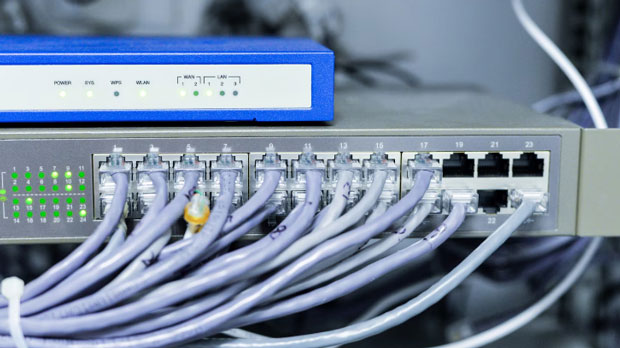In the world of online privacy and security, both free socks5 proxies and VPNs are commonly used tools for masking IP addresses and encrypting internet traffic. However, each has its distinct features, advantages, and limitations. For individuals deciding which service better suits their specific needs, it’s crucial to understand the fundamental differences between these two technologies. A free socks5 proxy list provides users with a list of socks5 proxy servers that can be used to route internet traffic anonymously, while a VPN (Virtual Private Network) encrypts all internet traffic from the user's device, offering a higher level of security. This article will dive into the comparison of both, analyzing when one might be more appropriate than the other based on different user needs. Understanding Free SOCKS5 ProxiesA SOCKS5 proxy is a type of internet protocol used to route traffic through an intermediary server. Unlike traditional proxies, SOCKS5 proxies support various types of internet traffic, including HTTP, FTP, and others, making them highly versatile for different activities. A free socks5 proxy list typically offers users access to a range of proxy servers that can be used for anonymity and bypassing geographical restrictions. However, it's important to understand that free SOCKS5 proxies come with certain limitations.Key Features of Free SOCKS5 Proxies1. Anonymity and IP Masking: Free SOCKS5 proxies primarily offer IP masking. By routing your traffic through a proxy server, your original IP address is hidden, making it appear as though your internet activity is coming from the proxy's IP address. This can help users access content restricted by location and maintain a degree of anonymity online.2. No Encryption: Unlike VPNs, SOCKS5 proxies do not encrypt your internet traffic. This means while your IP address is hidden, the data transmitted between your device and the proxy server is not secured. As a result, your browsing activity may be exposed to hackers or other third parties if they have access to the network.3. No Internet-wide Protection: SOCKS5 proxies only route traffic for the specific applications that are configured to use the proxy, such as web browsers or torrent clients. This means that other apps or background processes on your device will not be protected by the proxy unless they are specifically set to use it.4. Free and Accessible: Free SOCKS5 proxies are easy to find and use, making them an attractive option for users looking for a quick and simple solution to bypass geo-restrictions or access content from different countries. However, many free proxy lists are unreliable and can sometimes be slow or unstable.Understanding VPNsA Virtual Private Network (VPN) is another tool commonly used to secure internet traffic and ensure online privacy. Unlike a SOCKS5 proxy, a VPN encrypts all of the user’s internet traffic and routes it through a secure tunnel, making it nearly impossible for third parties to intercept or spy on your data.Key Features of VPNs1. Encryption and Security: The most significant advantage of a VPN is the encryption it offers. VPNs protect all internet traffic, including emails, web browsing, file transfers, and more. This encryption ensures that your data is safe from hackers, especially when using public Wi-Fi networks. VPNs also provide robust security features such as kill switches, DNS leak protection, and IP masking.2. Complete Privacy: A VPN not only hides your IP address but also ensures that all your internet activities are secure. Unlike SOCKS5 proxies, which may leave your data unprotected, VPNs ensure that your online activities are shielded from ISPs, governments, or any other entities attempting to track or monitor your behavior.3. Broad Protection: VPNs protect all internet traffic on your device, which includes every app and service that connects to the internet. Whether you're browsing the web, streaming videos, or using an online messaging app, all data is encrypted and routed through the VPN server.4. Subscription Costs: While many VPN services offer free trials or basic free versions, premium VPN services usually require a paid subscription. However, these paid versions offer more features, such as faster speeds, access to more server locations, and enhanced security features.Key Differences Between Free SOCKS5 Proxies and VPNs1. Security: The most significant difference is security. While both free SOCKS5 proxies and VPNs can mask your IP address, VPNs provide robust encryption, ensuring your internet traffic is secure. SOCKS5 proxies, on the other hand, do not offer encryption, leaving your data exposed.2. Privacy: A VPN guarantees a higher level of privacy compared to SOCKS5 proxies. VPNs secure your entire internet connection, while SOCKS5 proxies only work with specific applications, making them less effective for comprehensive privacy protection.3. Speed and Performance: Free SOCKS5 proxies may offer faster speeds for certain activities like browsing and streaming, as they do not need to encrypt data. However, these proxies can be unreliable, leading to slower speeds or downtime. VPNs, due to the encryption process, may sometimes experience slower speeds, but they offer more reliable and consistent performance.4. Ease of Use: Free SOCKS5 proxies are often easier to set up and use, especially for individual applications like web browsers or torrent clients. VPNs, while typically simple to set up, require installation of specific software or apps and provide a broader range of features.When Should You Use Free SOCKS5 Proxies?Free SOCKS5 proxies can be a good choice for individuals who require basic anonymity, particularly for tasks like browsing the web or accessing region-locked content. If privacy isn’t your top priority, or if you're looking to bypass restrictions without needing encryption, SOCKS5 proxies might be sufficient. Additionally, they are ideal for lightweight activities like streaming or browsing where speed is more important than security.However, free SOCKS5 proxies should be used cautiously. Since many of these are unregulated, they can expose users to security risks. Free proxies can also be slow, unreliable, and sometimes even inject ads or malware. If your needs are more than just basic browsing or you require better security, you might want to look for more secure options.When Should You Use a VPN?A VPN is ideal if privacy and security are your primary concerns. VPNs are particularly useful for activities such as online banking, accessing sensitive work documents, or using public Wi-Fi networks. If you need encryption and comprehensive protection for all your internet traffic, a VPN is the better choice. Additionally, if you want to secure your entire device, including applications not typically supported by proxies, a VPN is the preferred option.For individuals who require a higher level of anonymity or are involved in activities where security is a concern, VPNs are the more suitable option. Despite potential slower speeds due to encryption, the added security and reliability make VPNs a stronger choice in these cases.Conclusion: Which is Better for Your Needs?The decision between using a free SOCKS5 proxy list or a VPN depends largely on what you need in terms of online privacy, security, and performance. If you’re primarily looking for a quick, free solution for anonymity, such as unblocking websites or hiding your IP address, a free SOCKS5 proxy might be sufficient. However, if your primary concern is ensuring your entire internet connection is secure, encrypted, and private, then a VPN is the more reliable choice. For comprehensive online security, protecting all your internet traffic, and ensuring peace of mind, a VPN is ultimately the more effective option.In summary, evaluate your specific requirements—whether it’s browsing anonymously, streaming content, or protecting sensitive data—and choose the tool that best meets those needs. Both SOCKS5 proxies and VPNs have their place, but for long-term privacy and security, a VPN is generally the better fit.
Dec 27, 2024






















































